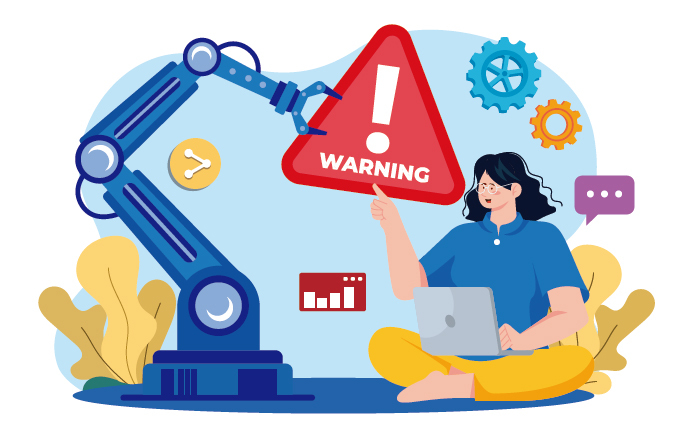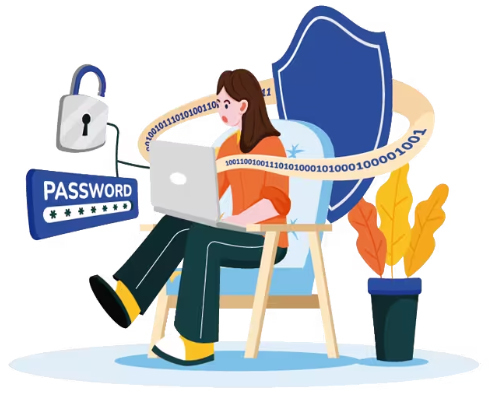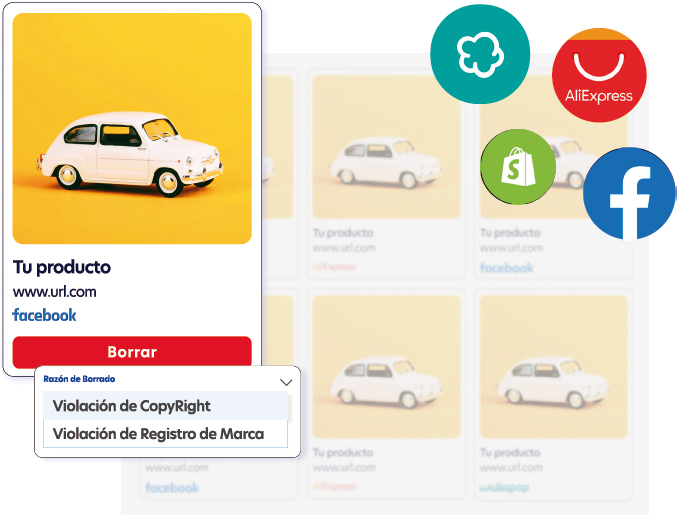GlobalBlock: protect your brand online in over 550 extensions
October 3, 2025 | Iñigo de las Heras Nuin
Protección de Marca
Today, having an unprotected brand online is like leaving your shop door wide open in the middle of a busy city. Cybercriminals and opportunists seize every opportunity: they register domains using your brand name, build fake websites to deceive your customers, or simply increase the cost of acquiring a domain that should rightfully belong to you.
The problem is that the domain extension landscape grows every year: it's no longer just about .com, .net or .es. There are now hundreds of new extensions such as .shop, .online, .app, .tech, .xyz… And if you're a recognised brand, the risk of your name being exploited increases exponentially.
This is where GlobalBlock comes in — the digital shield that blocks your brand across more than 550 domain extensions, preventing anyone from registering your name for malicious purposes. In this article, we explain what it is, how it works, when it becomes essential, and why it's far more cost-effective and reliable than registering hundreds of domains manually.
What is GlobalBlock?
GlobalBlock is a solution designed to protect the digital identity of companies and brands at scale. Instead of registering your brand name one by one in every possible extension (which is unfeasible in both time and cost), GlobalBlock automatically blocks your brand name in over 550 domain extensions worldwide.
That means no one can register variations like yourbrand.shop, yourbrand.app or yourbrand.online without your permission. You don’t have to do anything: the block is applied in bulk and renewed automatically while the service is active.
GlobalBlock vs GlobalBlock+: what's the difference?
There are two levels of protection: standard GlobalBlock and GlobalBlock+. Both prevent third parties from registering domains that match your brand across hundreds of extensions, but the advanced version goes a step further: it also blocks typographic and homograph variants (e.g., domains that look identical but use different characters, like swapping an "o" for a zero).
In practical terms, GlobalBlock is like putting a giant padlock on your brand name online, while GlobalBlock+ is like adding an intelligent alarm system that detects the most sophisticated impersonation attempts.
How does GlobalBlock work?
The process is simple. Once you prove you're the legitimate owner of a brand (typically via an official trademark registration), your name is immediately blocked in all supported extensions. This prevents anyone from registering a domain that matches it exactly.
If a third-party domain expires, GlobalBlock automatically captures it for you before anyone else can. And if you decide to use one of the blocked extensions — for example, launching a campaign with yourbrand.online — you just request an unblock, and the domain becomes yours.
The service also evolves: when new compatible extensions appear in the future, your brand will automatically be protected there too — no extra effort required.
Who should use GlobalBlock?
While any company with an online presence can benefit, GlobalBlock is especially valuable for:
- Established and high-profile brands:
such as retailers, tech companies, or fashion brands, who are frequent targets of fraud. - Companies expanding internationally:
that can't afford the risk of someone registering their name in a local extension. - Digital-first startups:
looking to protect their name from the beginning before others can exploit it. - Public figures, artists, and influencers:
whose names carry value and could be used to mislead followers.
Imagine what could happen if a cybercriminal registers yourbrand.shop or yourbrand.app and starts selling fake products or stealing your customer data. With GlobalBlock, that risk disappears.
GlobalBlock vs manual registration: why it pays off
Here’s the big difference. For years, brand protection strategies in domain management involved registering as many extensions as possible defensively. If your brand was “Example,” you’d buy example.com, example.net, example.es, example.shop, example.online… until your budget ran dry.
The problem? This method has three major drawbacks:
- It's expensive:
each domain is billed annually. Multiply €30 or €40 by over 500 extensions and you'll see the astronomical cost. - It's inefficient:
even if you register dozens of domains, gaps remain — you simply can’t cover the entire universe of extensions. - It consumes resources:
someone has to manage renewals, transfers, and monitoring — time and money better spent on growing your business.
GlobalBlock solves all of these at once: one contract, a much more manageable flat fee, and instant coverage across hundreds of extensions. Instead of wasting money on defensive registrations you’ll never use, you block your brand in bulk and only activate what you truly need.
It’s like comparing a padlock on every single door to installing a smart, centralized security system that protects the whole building. GlobalBlock is simply smarter and more affordable.
Most sensitive domain examples
Although the list includes over 550 extensions, here are some of the most exploited by cybercriminals:
- .com and .net:
due to their global familiarity. - .es, .fr, .de:
used to target local customers. - .shop, .store:
perfect for fake ecommerce sites. - .app:
often used to impersonate official app downloads. - .online, .site, .xyz:
cheap and widely abused for phishing schemes.
Do you really want to risk someone registering yourbrand.shop and using it to sell fake products? With GlobalBlock, that won't happen.
Protect your name and future now
Your online reputation is one of your most valuable assets. Losing it due to a malicious domain can cost millions in revenue and trust. GlobalBlock is the most practical, cost-effective and robust way to safeguard your brand name on the Internet: block at scale, reduce costs, simplify management, and gain the peace of mind that your brand is truly protected.
Instead of battling shady domains one by one, GlobalBlock gives you a shield that neutralises the problem at the root.











